#creative techniques
Explore tagged Tumblr posts
Text
10 Non-Lethal Injuries to Add Pain to Your Writing
New Part: 10 Lethal Injury Ideas
If you need a simple way to make your characters feel pain, here are some ideas:
1. Sprained Ankle
A common injury that can severely limit mobility. This is useful because your characters will have to experience a mild struggle and adapt their plans to their new lack of mobiliy. Perfect to add tension to a chase scene.
2. Rib Contusion
A painful bruise on the ribs can make breathing difficult, helping you sneak in those ragged wheezes during a fight scene. Could also be used for something sport-related! It's impactful enough to leave a lingering pain but not enough to hinder their overall movement.
3. Concussions
This common brain injury can lead to confusion, dizziness, and mood swings, affecting a character’s judgment heavily. It can also cause mild amnesia.
I enjoy using concussions when you need another character to subtly take over the fight/scene, it's an easy way to switch POVs. You could also use it if you need a 'cute' recovery moment with A and B.
4. Fractured Finger
A broken finger can complicate tasks that require fine motor skills. This would be perfect for characters like artists, writers, etc. Or, a fighter who brushes it off as nothing till they try to throw a punch and are hit with pain.
5. Road Rash
Road rash is an abrasion caused by friction. Aka scraping skin. The raw, painful sting resulting from a fall can be a quick but effective way to add pain to your writing. Tip: it's great if you need a mild injury for a child.
6. Shoulder Dislocation
This injury can be excruciating and often leads to an inability to use one arm, forcing characters to confront their limitations while adding urgency to their situation. Good for torture scenes.
7. Deep Laceration
A deep laceration is a cut that requires stitches. As someone who got stitches as a kid, they really aren't that bad! A 2-3 inch wound (in length) provides just enough pain and blood to add that dramatic flair to your writing while not severely deterring your character.
This is also a great wound to look back on since it often scars. Note: the deeper and wider the cut the worse your character's condition. Don't give them a 5 inch deep gash and call that mild.
8. Burns
Whether from fire, chemicals, or hot surfaces, burns can cause intense suffering and lingering trauma. Like the previous injury, the lasting physical and emotional trauma of a burn is a great wound for characters to look back on.
If you want to explore writing burns, read here.
9. Pulled Muscle
This can create ongoing pain and restrict movement, offering a window to force your character to lean on another. Note: I personally use muscle related injuries when I want to focus more on the pain and sprains to focus on a lack of mobility.
10. Tendonitis
Inflammation of a tendon can cause chronic pain and limit a character's ability to perform tasks they usually take for granted. When exploring tendonitis make sure you research well as this can easily turn into a more severe injury.
This is a quick, brief list of ideas to provide writers inspiration. Since it is a shorter blog, I have not covered the injuries in detail. This is inspiration, not a thorough guide. Happy writing! :)
Looking For More Writing Tips And Tricks?
Check out the rest of Quillology with Haya; a blog dedicated to writing and publishing tips for authors!
Instagram Tiktok
#hayatheauthor#haya's book blog#haya blogs#writing community#quillology with haya#writing tools#writer things#writing advice#writer community#writing techniques#writing prompt#writing stuff#creative writing#ya writing advice#writing tips and tricks#writer tools#writers of tumblr#writer blog#writers block#quillology with haya sameer#writers on tumblr#writerscommunity#writer stuff#author help#author advice#author#writing inspiration#writeblr#novel writing#on writing
62K notes
·
View notes
Text
Production history around: Broodiest Flunkey
Finally, I am getting to what I consider the ‘first’ film in my journey as an experimental filmmaker: ‘Broodiest Flunkey’.

This film is a bit rough — it was made as a university project, with a deadline and 3 minute time limit. It was also the first time I had played with many visual effects, and the first time I had shown my work to a live audience.
A lot of what I will be saying in this article will be recycled from my university essay, as my memory on a lot of the details has started to fade.
I created a timeline for this production, so I will try my best to be chronological in the retelling of the film’s creation. Some of the elements may seem tangential, though that is a lot of my practice in general.

I really like the above, because it shows that learning and developing a project (or even personal development), takes a mix of both consumption (books, media) and action (events, trial runs). It also shows how unexpectedly events morph into one another.
In addition to this timeline, I had also created a dated excel timeline of when each event happened (yes, I am thorough). While it shows how ‘Change Spaces’ and ‘Gacha’nce’ fit into the timeline, those won’t be covered here. Noteworthy is how many events overlap with one another, as opposed to being linear.

iDAT XXX
On the 18th of November 2024, I attended an event by Mike Philips, celebrating 30 years since the creation of their institution ‘iDAT’. As part of this event, they ran a ‘telematic performance’ — pretty much information is passed from one system to another, leading to a series of interesting corruptions. This, is then dressed up in a fun avant-garde coat of paint.

It would take a lot later for me to realise that this is a great use of chance as a form of creation. Collaboration, corruptions, improv, a digital exquisite corpse, etc.
MA Experience Design — Design Lab 2
In Design Lab 1, I made a short animation going over the concepts of DADA. Therefore, making video work was heavily on my mind.

The Design Lab 2 brief made me think about what I could do to help the local community. When looking at ‘don’t assume you know your audience’, ‘experiment with materials’, ’leave something beautiful behind’, and ‘make a difference’, it led me down the path of considering making a documentary where I interview people with autism to allow them to be heard and understood.
Autism Documentary
So, I started to plan a documentary about autism, taking the brief into mind. There were lots of worries about it, and I could lie and say they were mostly about GDPR, but it was more so social anxiety of needing to work with so many people!

The in-class activity about making iterative comics was really interesting to me. I wanted to take this idea but apply it to a documentary format. I wanted something similar to the longitudinal study method that ‘Seven Up!’ (1964) engaged in, but also have myself and my beliefs examined as well. This would potentially happen by having a new director for the second film, where they critically look at the first film, and this process is continued indefinitely.
[Accidentally making an exquisite corpse before knowing what that really was!]
Allister Gall Email
The module brief included: ‘collaboration with multidisciplinary partners’. As I was working with film as a medium, I decided to reach out to Allister Gall, the BA Filmmaking programme leader at the University of Plymouth on the 23rd of January 2024. I asked if he was able to send me down the right path, or potentially let me attend a filmmaking lesson.

He let me know about Imperfect Cinema, and that an event was coming up called Cinaesthesia 1. I was very lucky with the timing, as the event was only four days after I sent my email.
[It is funny, I consider this single email an extremely important pivot in my life. If I had not written this email, I likely would not be doing my current PhD, and would not be making experimental art videos. I wouldn’t have heard of Cinaesthesia, and Allister wouldn’t have become one of my PhD supervisors… This email took a minute or two to write, all it takes sometimes.]
The Reason I Jump
During my initial look into autism for the documentary, I read ‘The Reason I Jump’ (2007). The book was written by a 13-year-old mute autistic child living in Japan, and each chapter is them explaining why they do certain actions.

When reading, I realised that there were many areas in which I related to this child, especially thinking back to when I was the same age. While I did not relate to everything, I did more than I normally would with someone. With each example, I started to feel less embarrassed about some moments from my childhood. Moments that I used to fixate on, thinking ‘why did I do that?’ suddenly had an answer that didn’t make me feel as alone or weird.
This feeling of seeing yourself in a book, and this resulting in you being less critical of yourself, I decided to be the message I wanted from my film.
Cinaesthesia 1
This event was run by Patrycja Loranc in collaboration with Imperfect Cinema, and took place at Café Momus on Stonehouse. Patrycja is a PhD student focussing on psychepoetic filmmaking, and the event shared some of this energy.

(Jess Scott, Dutch Loveridge, and Patrycja Loranc at Cinaesthesia 1’s Q&A)
Imperfect Cinema is a Plymouth-based film project created by Allister Gall and Dan Paolantonio, which has the goal of encouraging local artists to create films, as well as to help facilitate events these artists can participate in.

[Side tangent — At this point (8 months since hearing about them), I have heard the two of them go over their intro so many times. It makes me think about what it means to be an academic at university — the need to tear up old ground constantly to explain who you are and what you do. It sounds kind of hellish. I’d struggle to not just make an intro video lol]

As a note for this event, and the ones I talk about later, the networking elements of these screenings are incredible. You get to ask questions directly, sample a lot of local talent, and see the effort of people coming forward. It takes bravery to put yourself out there, and most people there seem to appreciate that.
I was worried that the event would be too ‘heavy’, but it was very casual.
An element of the screening that really resonated with me was the diverse ‘quality’ and styles of work present. There were films presented that I thought ‘I could do that’, and that made me feel like less of an outsider at the event.

At this event, I learnt that a Cinaesthesia 2 and 3 were going to happen in the future, and that they had an open reel for submissions. I pivoted from ‘documentary about autism’ to ‘experimental art film that looked into my own personal experiences reading into autism’.
Getting into Cinaesthesia 2
In order to get a film accepted into Cinaesthesia there were guidelines that needed to be adhered to.
The brief was: “How can the sensory perception/subjective experience be communicated and challenged by filmmaking? How does film allow us to connect to others and the world by exchanging subjective realities?”
It also included that the film must be 3 minutes or less, and submitted by 9pm 21/03/2024.
Experimental Film Production Start
I started my pivot by looking into what made someone’s perception ’unique’, thought about there being so many variables with each person, that everyone’s perception was unique.

In addition to this, I started to consider that my own perception was likely the perception I could best put across to an audience.
I wanted to, somehow, make the audience experience a sense of uneasiness by seeing the world through someone who processes stimuli differently.

Rosemary’s Baby
On the 26th of January 2024, my wife and I watched Rosemary’s Baby (1968) for the first time. It is a great film. In it there is a scene where the main character is trying to work out an anagram by moving around scrabble pieces. I had no plans with this at all. It was just a theme dancing around in my head.

Experience Design’s Telematic Performance
For one of the Design Lab 2 session, Mike Philips wanted us to do a ‘telematic performance’. Since I had seen one prior via his iDAT XXX event, I feel that I had a step ahead of others in the class. This was due to me already knowing what it was meant to look like, and understanding that anything could be used as a step (as long as it caused transformation down the line).

As such, I pushed forward with using Scrabble pieces early on in the sequence, and planned out what the rest of the performance would be.
I would take scrabble pieces out of a bag randomly. Person 2 would make words out of these random letters. Person 3 would then do charades of Person 2’s word. Person 4, who was wearing headphones, had to guess what Person 3 was miming, Person 5, then drew this answer on a post-it note, and added it to a scene on the board.
This whole process was fun, and made me really like the idea of using Scrabble pieces to tell a story.
Scrabble Pieces
Mixing the themes of anagrams and chance, I decided to have one phrase dictate different elements of my film’s story.
I wanted the overall message of the film to be in-line with my takeaway from ‘The Reason I Jump’, so I chose the phrase ‘Be Kind to Yourself’.

Using an online anagram maker, I went through the list of 10,000 combinations, and picked phrases that I thought I could use to string together a narrative that told a story I was happy with.

I wanted to use stop-motion as the technique for these scenes, as it added an eerie feeling that the pieces had a mind of their own, especially since they were what decided the course of the story. Originally, I wanted to film the pieces, and cut out appropriate frames. This did not work due to the camera changing focus, as such I landed on taking still photos after each movement instead.
As stop-motion is a time-intensive process, there were moments where I lost track of what pieces should go where. A colour coded guide was made to make the movement and locations easier to follow.

Pre-Storyboard
Before storyboarding, I thought about elements I wanted to film and why.
I felt that if I went into storyboarding, some fun techniques may have been squeezed out of the production for the sake of narrative.
So instead, I thought about these elements first and how I could use them in the narrative.
Storyboard
Storyboarding your film is useful, however, I did not want to limit myself by structure. For example, knowing how much time was left, or being fixated on scene order. The scenes were drawn in ‘chunks’ and then moved around in order to fit the narrative.

After doing my rough outline of the story, I wanted to make sure I could include the entire narrative in the 3-minute window required by the submission guidelines. As such, I experimented with scene intervals.

‘Yolk Unfit Bedsore’, I thought it was perfect as an opening introduction for a character. ‘Bedsore’ and ‘Yolk’ can both be seen as elements attached to starting the day. Additionally, ‘Unfit’ matched the negative self-image I wanted the main character to have, so the ‘Be Kind to Yourself’ later in the film made sense. Embarrassment seems to be a common issue for some autistic people, so I felt building this into the character was important.
Using this way of thinking, I was able to pace out the Scrabble pieces in a way that completed a cohesive narrative.
With the phrase ‘Befriend — Too Sulky’, I thought I could illustrate that autistic people often want to make social-emotional connections with people, but are unsure how to do so, and the pain this can cause.

I decided on having three second intervals for the storyboard, as I felt this fit best. Any shorter would have been too jarring. Originally, I inserted the Hero’s Journey as a vague guideline for pacing. While this was useful as a rough guide, I did not adhere to it much, as I felt it got in the way of what I believed was a better narrative; perhaps because it made the pacing feel like it was made on a production line.

Once I had my storyboard fully created additional details such as sound effects present, whether it needed chromakeying, and what editing decisions I thought would be needed were added.

In retrospect, I feel that I over-relied on the storyboard. I feel the piece could have been transformed into something more artful by applying wardrobe, doing more area scouting, reframing, and creating some concept art.
Prop Creation
After drawing up the storyboard, I realised that I did not know how I was going to have the other characters in the film be acted. This caused stress as the deadline loomed closer, and I wondered how I would fill these roles.

In order to solve this issue, I decided to use cardboard painted with acrylic for the additional characters instead. I felt that having the main character be the only real-life human added a sense of surrealism, as well as the idea that the plot is ‘from their point of view’. In addition to this, people with autism often feel ‘disconnected’ from other people, and I feel this separate ‘plane of existence’ with 2D vs 3D illustrates this idea in an interesting way.
The character at 0:47 having a sudden expression change was important as it shows the main character trying to grabble with a complex emotional encounter, which is considered a struggle for some with autism.
With the characters being made out of cardboard, I had the worry that this would come across as too jarring to the viewer. To solve this, and to make the overall film feel like it had a cohesive style, I decided to make more elements out of cardboard.

Items like the phone, egg, toothbrush, etc. were made out of cardboard as well. I believed it would be funny to have these mundane elements, that would be way easier to have the real-world items, be recreated. The prop creation was the most time intensive part of the project, but I think it was worth it. When the screening of the film happened, the props were the most complimented aspect by the audience in attendance.

In the film, early on, I have a moment where I flip an egg, purposely showing the cardboard underside. This is to reveal to the audience that I am not hiding the fact that these elements are cardboard — this works as a way to let them in on the silliness.

To help with cohesion for scenes where no props were present, the backgrounds are also acrylic on cardboard. These were added by using chromakeying. The painted areas are purposely small and zoomed in, to make the fact that they have texture and are cardboard more apparent.

Book
The book in the film had two versions, one which was a ‘prop book’, and one that I bound.
The prop book was a cover and back, with painted cardboard sides to resemble paper, and three DVD cases in the middle.
Because the bound book contains pages that were filmed, including the book, this needed to be created after the prop book scenes took place.
In order to match the Scrabble description of the book being ‘finely rusted’, I followed a tutorial by Treasure Books (2023) using cinnamon to create faux rust. This, on top of the book also being obviously cardboard I believed was a fine compromise.
My Wedding
In the middle of this production, with a deadline looming over, was my wedding. I am so happy that the whole process was easy.
[Only while writing this piece had it dawned on me that my filmmaking and married life have been so overlapped.]
Filming
The film was shot on a Sony Alpha 6400 with a SELP1650 lens, and a fisheye shot was done with a 7 Artisans 7.5mm 1:2:8 ED lens. A Sony GP-VPT2BT grip was also used in many scenes to allow for filming while a light was being held.
Two ‘EMART 60 LED’ lights were used to light up the scenes, and a ‘Neewer 5’x7' Greenscreen’ was used for chromakeying.
Some elements of the storyboard needed to be adapted to make the filming process easier. Firstly, a printed breakdown was made of each scene with what happens in terms of editing, effects, sounds, and props present, etc.
For the scenes that were included within the book, a chronological edit of the storyboard was made.
There were moments when parts of the production didn’t go to plan, and as such improvisation had to happen. For example, When the book was put into shrubbery at 2:20 in the film, originally it was meant to be pulled out by string. However, during filming, the string kept snapping. As such, we made the book float behind the main character instead.
Editing
The editing process was turbulent for a few reasons. Primarily, due to Vegas Pro 18 crashing every few hours, however this is unfortunately an aspect to be expected.
The editing process was useful, because it really allowed me to consider which moments were important to the narrative, which I don’t think I would have realised if I handed the work off to another person to edit.
The original cut of ‘Broodiest Flunkey’ was 4 minutes long, and as such 25% of the footage needed to be trimmed down in order to be within the 3-minute window required for submission.
The music at the start of the film is ‘Toc de matinades’ by Rafael Caro (2016), and is Catalonian folk music which is played in the streets early in the morning to wake up people so they can get ready for celebrations. Since this was the day that the main character learnt to be kind to themselves, and that it starts with them waking up, I thought it was appropriate. Also, the tone shift from positive music to more eerie and atmospheric music I felt made the transition feel more contrasted, and as such have more impact.
The sounds of the Scrabble pieces moving was made by moving a container filled with Lego.
With this, the film was finished and rendered. I decided to keep the film internal until Cinaesthesia 2, as associating its premier with the event felt special. This process of keeping videos unavailable until an in-person premier is a practice I feel makes attending an event feel more worthwhile.
Behind the Scenes
Due to the large amount of footage available, I decided to make a behind the scenes video to both commemorate the experience, and as an excuse to remove all the footage from my PC without feeling too bad about it being harder to access.
Cinaesthesia 2

Cinaesthesia 2 took place on 23rd March 2024, and was a lot of fun. Members of my cohort attended which was greatly appreciated.
I would say that the reaction to the screening was extremely positive.
I worried that the subject of autism may have been a bit out of place, or that I would have felt ‘othered’, but then again punk environments have always embraced those that were seen as on the ‘rim’ of society.
Q&A
I was part of a Q&A after the screening, and this was my first time I would talk about my work in a public forum like this. There was something really special about this I felt, and it made me want to talk about my work with others more in the future.
Meeting cool people
It overall was a great night, which made me excited for the future. I met so many cool and talented people, who have stuck around in the peripheries of my life for several months now.
Also, Abi Ali, one of the filmmakers present, stopped me after the show to say my work was her favourite, and guess what, her work was my favourite too.
SO YEAH! This is where it all began. Or rather, where I arbitrarily decided it began. Has it even started yet? Find out next time, on Dragon Ball Z!!
#filmmaking#experimental film#independent filmmaking#experimental art#avant-garde#artistic process#creative process#cinematography#chance in art#serendipity#randomness#creative exploration#autism and art#identity and creativity#art and transformation#artist journey#behind the scenes#personal growth#art reflections#creative techniques#video editing#film production#experimental methods#film community#artist support#creative collaboration#aesthetic#visual storytelling#abstract art
0 notes
Text
best cooking tips ,techniques and unique and delicious recipes if i need any kind of help contact expert
0 notes
Note
advice for a character who grips control like a lifeline. who wants to be in charge of every little thing because whenever they're not in control of something something bad could happen. has happened. they can't let a single variable be wild or in someone else's hands
How to Write a Controlling Character
Backstory Rooted in Trauma or Guilt
This character likely has a history that has ingrained the belief that they must be in control or face devastating consequences. Perhaps they once trusted someone else with something crucial—a promise, a responsibility, or a life-altering choice—and that trust was broken in a way that had lasting repercussions. For example, maybe they lost someone because they weren’t “careful enough,” or they experienced a betrayal when they trusted another person’s plan.
They might frequently flash back to this moment, possibly catching themselves thinking, If only I’d been the one in control, this wouldn’t have happened. This memory fuels their need to keep a tight grip on everything, especially if they’re in high-stakes situations.
Rigid Daily Routines and Habits
This character’s day is probably packed with small rituals and routines that give them a sense of security. From double-checking door locks to setting multiple alarms, they rely on routines to give themselves a sense of order. In fact, they might be nearly ritualistic about small actions—checking emails three times before sending, never leaving a task halfway finished, or meticulously arranging their workspace.
Even something as simple as making coffee can become a precise process. If someone moves one of their tools or a file from their desk, they may feel a spike of frustration or even anxiety, seeing it as a disruption to their personal “system.” They could feel that control in their daily life is the only thing keeping chaos at bay.
Intensely Observant of Details and Mistakes
They are hyperaware of mistakes or inefficiencies in others, mentally cataloging things like a coworker’s slight lateness or a friend’s disorganization. They may feel a sense of superiority (or frustration) over people who don’t “have it together” and take it upon themselves to organize or “fix” things for others.
In conversation, they might cut people off or “correct” them even over small points, often justifying this to themselves as necessary. For instance, if someone shares a plan that seems half-formed, this character could immediately dive in, pointing out potential problems or filling in details.
Controlling Relationships and Social Situations
This character struggles in relationships where they aren’t the dominant or organizing force. They might instinctively take over when making plans with friends, micromanaging even casual hangouts to make sure everything goes “right.” For example, they might pick the restaurant, plan the travel route, and check weather forecasts—assuming that if they don’t, no one else will think of these things.
When someone resists their attempts at control, they can respond defensively, often turning cold or resentful, unable to understand why anyone wouldn’t want them to manage the situation. Statements like, “Fine, but don’t blame me if this doesn’t go well,” are frequent in their interactions.
Extreme Anxiety or Panic When Control Is Taken Away
When things go beyond their reach, this character might experience panic, as if they’re suddenly powerless. For instance, if an unexpected roadblock prevents them from handling a task (like a canceled flight they needed to board, or a plan that falls apart), they might spend hours trying to regain control, calling every contact or frantically exploring alternatives.
Their reaction may feel extreme to others. Even minor setbacks—such as a colleague taking initiative on a project or a friend planning something without consulting them—can trigger a disproportionate response, like clenching their fists, pacing, or silently stewing as they feel the situation “slipping.”
Inability to Accept Help or Collaboration
Their controlling nature makes it hard for them to collaborate, as they believe their methods are the only ones that work. For them, accepting help feels like an admission of weakness or failure, so they rarely delegate or ask for assistance. If they do reluctantly accept help, they are constantly supervising or “suggesting” things, making it feel more like they’re still in charge.
In a team setting, they might take on all the major tasks, either out of distrust in others’ abilities or a feeling that no one will match their standards. Their motto could be something like, “If you want something done right, do it yourself,” even if that means working late or burning out.
Reluctance to Show Vulnerability or Need
Since vulnerability and control rarely coexist for them, they avoid showing weakness at all costs, preferring to mask stress or struggles as “just part of the job.” If they do become overwhelmed, they’re more likely to shut people out, saying, “I’ve got it handled,” even if it’s far from true.
When people push them to let go or share the load, they might lash out, accusing others of “just not understanding.” They often see their intense responsibility as a form of sacrifice, justifying their behavior with, “If I don’t handle this, who will?”
#creative writing#writeblr#ask box prompts#how to write a controlling character#how to write#writing tips#writing advice#writing resources#writing help#writing reference#writing prompts#how to#writing tools#writing techniques#writing stuff
2K notes
·
View notes
Text
Teasing Out the Unconscious
Frida Kahlo’s diary is a window into her intimate thoughts. If you like art journals and want to peek into this artist’s journal then you should read The Diary of Frida Kahlo: An Intimate Self-Portrait 1995 Introduction by Carlos Fuentes, Essay and commentaries by Sarah M. Lowe published by Harry N. Abrams Inc. Kahlo’s diary is a way to see how she negotiates her relationship with herself. She…
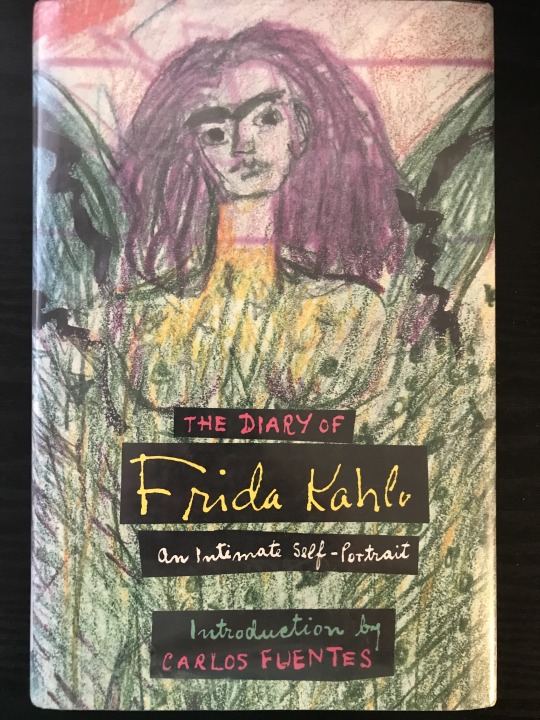
View On WordPress
#art#art diary#art history#Art Journaling#arts#creative techniques#creativity#drawing#encouragement#Frida Kahlo#Inspiration#process
1 note
·
View note
Note
hi! do u have any prompts or tips for writing miscommunication?
Hi, thanks for asking! Miscommunication is such a powerful tool in storytelling—it can create tension, humor, heartbreak, disaster, deepen conflict, and make relationships feel more real, all depending on how you use it. Here are some tips and ideas!
1. Give them a reason to misunderstand.
Miscommunication isn’t just about bad hearing or unclear words—it’s about perspective. Each character brings their own biases, fears, and assumptions into a conversation, which shapes how they interpret things.
Examples:
Misreading the other’s tone as disinterest or rudeness, or taking sarcasm seriously.
Being too embarrassed to ask for clarification and pretending to understand.
Hearing part of a conversation and assuming the worst before getting the full story.
2. Use context & distractions to twist the meaning.
Realistic miscommunication often happens because of outside factors, like background noise, stress, exhaustion, or missing context. If your character is in a high-stakes situation, they may be more likely to misinterpret things.
Examples:
Two characters are arguing, and one storms off before hearing the other’s explanation.
A message is delivered at the worst possible time, leading to an unintended misunderstanding.
Assuming they’re being talked about when the topic is something or someone else entirely.
3. Non-verbal miscommunication.
Miscommunication can come from texts, body language, cultural differences, or even personal insecurities—it doesn’t always have to be verbal.
Examples:
Assuming a friend is ignoring them when they’re actually distracted or dealing with something else.
Sending a message to the wrong person.
A nervous laugh at the wrong time, making it seem like they’re mocking someone’s pain.
4. Let it snowball, but not forever.
A small miscommunication can grow into something huge, but at some point, it should ideally be resolved. The longer it lasts, the more consequences it will have, which may be what you’re going for, but it also makes it more frustrating for the reader.
Examples:
Holding a grudge for months over a misunderstanding.
One person finally explains the truth, but the other is too stubborn to believe them—until undeniable proof forces them to see it.
5. Use miscommunication to reveal character flaws.
How your characters handle (or fail to handle) miscommunication can reveal a lot about them. Do they get defensive? Do they double down? Do they laugh it off? Their reaction can reveal a lot about their personality.
Examples:
Always assuming the worst and jumping to conclusions.
Refusing to admit they misunderstood and instead blaming the other person.
Habit of overexplaining, making things even more confusing.
Hope this helped! For more specific prompts, feel free to check out my previous post, linked here.
Previous | Next
#ask#writeblr#writing#writing tips#writing advice#writing help#writing resources#creative writing#writing prompts#writing ideas#miscommunication#writing techniques#deception-united
680 notes
·
View notes
Text
The Act of Writing Psychotic Characters
Part 1: Attention vs Intention
It's been a while since I received this request, and I ensured I took my time with the thoughts, evaluation, and analysis. This topic will be covered in three parts, so here's the first.
Before we proceed, please note that I am not a psychiatrist, psychologist, or any professional in that field. This is just an insight into how this kind of concept can fit into your novels.
Okay, let's begin.
The Attention vs Intention part of this topic will discuss two ways of portraying these type of characters in scenes.
First, you need to understand that psychotic characters aren't psychotic based solely on their speeches or actions. If that's all you have in mind before approaching a story, you might leave a huge gap in the execution.
Rather, it's how they feel—the desire to satisfy their current emotions.
They have drives and motives, but most especially beliefs which, in most cases, are hardly understandable by other people. It's wrong and unacceptable by society, but to them, they wouldn't do it any differently.
That's why most psychotic characters have no remorse. You simply can't apologize or feel sorry if you don't 'believe' that you're in the wrong.
➜ Attention Psychosis
Psychotic characters whose main purpose in a story is limited to presence (i.e., showing up in scenes and visibly serving the role of a psychotic character) are attention psychotics. You don't flesh out their backstory or why they are who they are.
Their drives and motives aren't talked about enough to the point of justification. Readers hardly care about them, but the action they bring to the scene creates a rich narrative with the purpose of psychosis.
In summary, their role is minor. We see such cases in movies like The Babysitter.
Let's agree that none of the cult characters in that movie are exactly sane, as their main aim is to end their victims’ lives in the sickest ways possible. However, there's a certain character, Max, who simply enjoys the idea of "killing and seeing people bleed."
That has exceeded the central idea of being a cultist who gets involved in blood sacrifice to achieve their 'dream life' like the rest of the characters. It's now something more and different.
Something that has to do with homicidal ideation.

Max worked in a diner where he dealt with people that annoyed him so greatly that he wanted to kill them. So he got the opportunity to join a cult and do just that.
It was plain clear this guy had something else going on for him, but throughout the movie, his character had no special attention or even a peek into his thoughts. Although, it still worried the audience. Job done.
➜ Intention Psychosis
When a story is centered around a character's mental state, their motives, drives, beliefs, actions, and the story actually unfolds by going deeper into this concept, you have intention psychosis.
If not entirely, at least mostly, it defines the entire plot surrounding that character. People get to understand why they are who they are, their mode of action, what drives them, and even a peek into how they perceive the world around them.
Such scenarios are seen in movies like The Joker and Pyramid game (Korea). The audience gets a glimpse into their overall life and understands at least to an extent why they are the way they are.
Their beliefs get twisted for certain reasons, and there was just no stopping them. Here the characters were more than a presence; they were a central core.
In the movie Joker, we watched Arthur’s impoverished life unfold, with every event and incident worsening his condition further.

Baek Ha-rin in Pyramid Game literally created an entire game system to watch a student, who happened to be her old friend, suffer both physically and mentally. She went to great lengths to carry out this nefarious act under the guise of the game. Although this movie encompassed more than just this storyline, it was hard to ignore the unhealthy drive and actions of the young lady with an innocent face.
Before incorporating a psychotic character in your novel, determine their form of portrayal and appearance in the overall story. Are they going to serve as an attention psychotic or an intention psychotic?
Inspired by @sothera
Stay tuned for the next part!

Before you go!

My Characters and I is an extensive one-on-one coaching session designed to create characters that leap off the pages and become best friends with your readers.
What's a great story without remarkable characters? Spots are filling up fast, so grab yours now and get ahead of millions of writers out there.
👇👇👇
#writing#writeblr#writers on tumblr#writer#writers and poets#writerscommunity#writing community#wattpad#ao3 writer#a03 writer#writing advice#writing tips and tricks#writing tips#writing techniques#writing guide#writing blog#creative writing#fiction writing#writing life#writing novels#writing on tumblr#writing process#writing resources#writing reference#writing strategies#writing writing writing#writers of tumblr#aspiring writer#aspiring author#writing a book
883 notes
·
View notes
Text
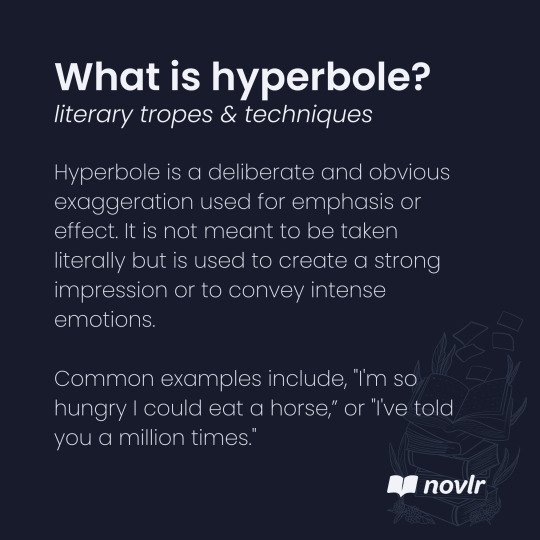
#literary devices#writing terms#writing tropes#writers#creative writing#writing#writing community#writers of tumblr#creative writers#writing inspiration#writeblr#writerblr#writing tips#about writing#writing stuff#tropes#literary terms#literary techniques#literary device#let's write#how to write#helping writers#writer#writers on tumblr#writing advice#writing resources#writers and poets#writing help#help for writers#tips for writers
819 notes
·
View notes
Text

#post#creative writing#ao3 author#ao3 fanfic#ao3feed#archive of our own#writing techniques#writer life#writers of tumblr#writers life#writers on tumblr#writer#writer things
181 notes
·
View notes
Note
hi there! im a fan of your page 💕
can you give me the best studying techniques?
hi angel!! @mythicalmarion tysm for asking about study techniques 🤍 i'm so excited to share my secret methods that helped me maintain perfect grades while still having a dreamy lifestyle + time for self-care!! and thank you for being a fan of my blog, it means everything to me. <3
~ ♡ my non-basic study secrets that actually work ♡ ~
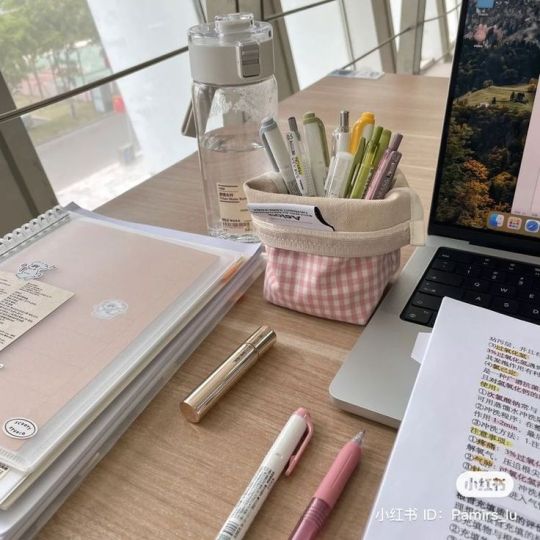

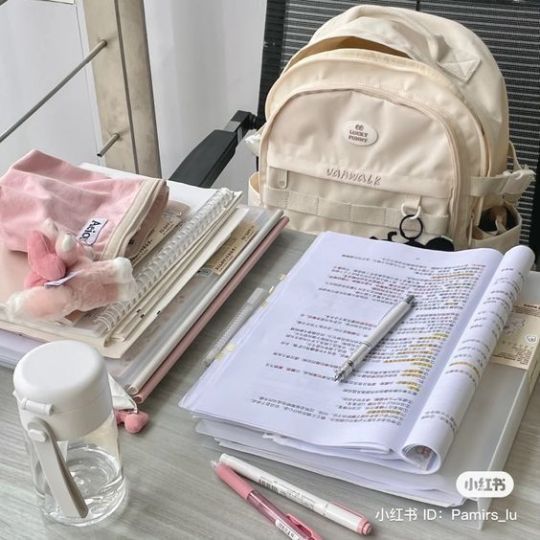

(don't mind the number formatting)
the neural bridging technique this is literally my favorite discovery!! instead of traditional note-taking, i create what i call "neural bridges" between different subjects. for example, when studying both literature + history, i connect historical events with the literature written during that time. i use a special notebook divided into sections where each page has two columns - one for each subject. the connections help you understand both subjects deeper + create stronger memory patterns!!
here's how i do it:
example:
left column: historical event
right column: literary connection
middle: draw connecting lines + add small insights
bottom: write how they influenced each other
the shadow expert method this changed everything for me!! i pretend i'm going to be interviewed as an expert on the topic i'm studying. i create potential interview questions + prepare detailed answers. but here's the twist - i record myself answering these questions in three different ways:
basic explanation (like i'm talking to a friend)
detailed analysis (like i'm teaching a class)
complex discussion (like i'm at a conference)
this forces you to understand the topic from multiple angles + helps you explain concepts in different ways!!
the reverse engineering study system instead of starting with the basics, i begin with the most complex example i can find and work backwards to understand the fundamentals. for example, in calculus, i start with a complicated equation + break it down into smaller parts until i reach the basic concepts.
my process looks like:
find the hardest example in the textbook
list every concept needed to understand it
create a concept map working backwards
study each component separately
rebuild the complex example step by step
the sensory anchoring technique this is seriously game-changing!! i associate different types of information with specific sensory experiences:
theoretical concepts - study while standing
factual information - sitting at my desk
problem-solving - walking slowly
memorization - gentle swaying
review - lying down
your body literally creates muscle memory associated with different types of learning!!
the metacognition mapping strategy i created this method where i track my understanding using what i call "clarity scores":
level 1: can recognize it
level 2: can explain it simply
level 3: can teach it
level 4: can apply it to new situations
level 5: can connect it to other topics
i keep a spreadsheet tracking my clarity levels for each topic + focus my study time on moving everything to level 5!!
the information architecture method instead of linear notes, i create what i call "knowledge buildings":
foundation: basic principles
first floor: key concepts
second floor: applications
top floor: advanced ideas
roof: real-world connections
each "floor" must be solid before moving up + i review from top to bottom weekly!!
the cognitive stamina training this is my absolute secret weapon!! i use a special interval system based on brain wave patterns:
32 minutes of focused study
8 minutes of active recall
16 minutes of teaching the material to my plushies
4 minutes of complete rest
the specific timing helps maintain peak mental performance + prevents study fatigue!!
the synthesis spiral evolution this method literally transformed how i retain information:
create main concept spirals
add branch spirals for subtopics
connect related concepts with colored lines
review by tracing the spiral paths
add new connections each study session
your notes evolve into a beautiful web of knowledge that grows with your understanding!!
these methods might seem different from typical study advice, but they're based on how our brains actually process + store information!! i developed these through lots of research + personal experimentation, and they've helped me maintain perfect grades while still having time for self-care, hobbies + fun!!
sending you the biggest hug + all my good study vibes!! remember that effective studying is about working with your brain, not against it <3
p.s. if you try any of these methods, please let me know how they work for you!! i love hearing about your study journeys!!
xoxo, mindy 🤍
glowettee hotline is still open, drop your dilemmas before the next advice post 💌: https://bit.ly/glowetteehotline

#study techniques#academic success#unconventional study methods#creative study tips#neural bridging#shadow expert method#reverse engineering study#sensory anchoring#effective studying#minimal study guide#glowettee#mindy#alternative learning#academic hacks#study inspiration#cognitive stamina#learning tips#study motivation#unique study strategies#self improvement#it girl energy#study tips#pink#becoming that girl#that girl#girlblogger#girl blogger#dream girl#studying#studyspo
174 notes
·
View notes
Text
Emotion doesn’t live in the moment it’s named. It lives in the moment it’s shown.
A guide to writing emotion that lingers.
Writers are often told to “show, not tell,” but when it comes to emotional scenes, that advice can feel vague. What does showing emotion actually look like on the page?
Let’s start with this:
“She was heartbroken.”
“He was furious.”
“They were in love.”
These lines tell us what to feel — but they don’t make us feel it. And the truth is: naming the emotion is often the least emotional way to express it. Because real emotion — the kind that stays with the reader — doesn’t come from labels. It comes from subtext. From silence. From contradiction. From tension.
1. People rarely say what they feel directly. Neither should your characters.
In life, we often mask our deepest feelings — out of fear, shame, pride, or the desire to protect someone else. Let your characters do the same.
Instead of:
“I’m afraid you’ll leave me.”
Try:
“Don’t make promises you can’t keep.”
(Said too quickly, with their hand pulling back.)
Instead of:
“I love you.”
Try:
“You never let anyone close, do you?”
(Said while brushing their fingers against a sleeve, then looking away.)
Emotion lives in what your characters almost say. The tension between what’s spoken and what’s felt is where the magic happens.
2. Let body language contradict the dialogue.
Emotion slips through the cracks. You can reveal everything without a single explicit word.
“I’m fine,” she says — while clenching her jaw and staring at the chipped mug he gave her last winter.
He says he doesn’t care. But he hasn’t touched his drink. He keeps checking the door.
These contradictions signal to the reader that what’s being said is not what’s truly felt — and that discrepancy creates emotional depth.
3. Use objects, routines, and settings to reflect emotional states.
Sometimes what a character does with their environment tells us more than what they say.
A character grieving might keep reboiling tea, never drinking it.
A character in love might fold their lover’s scarf and place it beside the pillow, carefully, as if it matters.
A character afraid of confrontation might suddenly fixate on straightening the books on a shelf mid-argument.
This technique is especially powerful when a character is trying to repress what they feel. Let the emotion spill into the physical world around them.
4. Interruptions and hesitations matter.
Don’t be afraid of silence. Use fragmented dialogue. Let the rhythm break.
“I just—”
“What?”
“Nothing. It’s stupid.”
(But she’s twisting the ring on her finger like it’s the only thing anchoring her.)
These moments tell us: there’s something beneath the words. Something unsaid. Something important. That tension pulls the reader deeper.
5. Show how emotion distorts time, memory, and logic.
Strong emotion changes perception.
A character in panic might notice every sound but can’t remember how they got from one room to another.
A character in love might focus on the way light moves across someone’s cheek and forget their own name for a second.
A character in shock might hear someone talking but not register the words.
These small distortions add layers of realness to emotional scenes. They show us that something profound is happening internally — even if externally, everything is quiet.
So how do you make your readers feel something?
You don’t do it by naming the emotion.
You do it by crafting a moment that requires the reader to step closer. To observe. To interpret. To feel it themselves.
Let the reader discover what your character can’t say. Let them understand it before your character does.
That’s when emotion becomes unforgettable.
That’s when your story sticks.
#writing#writeblr#writers of tumblr#writing tips#writing advice#amwriting#writing community#creative writing#show don't tell#writing emotions#character development#sub text#emotional writing#writing craft#writing techniques#haunting prose#writing with feeling#soft dark academia#dark academia#moody writing#romantic writer#character driven#vibsinkpot
97 notes
·
View notes
Text
100 Dialogue Tags You Can Use Instead of “Said”
For the writers struggling to rid themselves of the classic ‘said’. Some are repeated in different categories since they fit multiple ones (but those are counted once so it adds up to 100 new words).
1. Neutral Tags
Straightforward and unobtrusive dialogue tags:
Added, Replied, Stated, Remarked, Responded, Observed, Acknowledged, Commented, Noted, Voiced, Expressed, Shared, Answered, Mentioned, Declared.
2. Questioning Tags
Curious, interrogative dialogue tags:
Asked, Queried, Wondered, Probed, Inquired, Requested, Pondered, Demanded, Challenged, Interjected, Investigated, Countered, Snapped, Pleaded, Insisted.
3. Emotive Tags
Emotional dialogue tags:
Exclaimed, Shouted, Sobbed, Whispered, Cried, Hissed, Gasped, Laughed, Screamed, Stammered, Wailed, Murmured, Snarled, Choked, Barked.
4. Descriptive Tags
Insightful, tonal dialogue tags:
Muttered, Mumbled, Yelled, Uttered, Roared, Bellowed, Drawled, Spoke, Shrieked, Boomed, Snapped, Groaned, Rasped, Purred, Croaked.
5. Action-Oriented Tags
Movement-based dialogue tags:
Announced, Admitted, Interrupted, Joked, Suggested, Offered, Explained, Repeated, Advised, Warned, Agreed, Confirmed, Ordered, Reassured, Stated.
6. Conflict Tags
Argumentative, defiant dialogue tags:
Argued, Snapped, Retorted, Rebuked, Disputed, Objected, Contested, Barked, Protested, Countered, Growled, Scoffed, Sneered, Challenged, Huffed.
7. Agreement Tags
Understanding, compliant dialogue tags:
Agreed, Assented, Nodded, Confirmed, Replied, Conceded, Acknowledged, Accepted, Affirmed, Yielded, Supported, Echoed, Consented, Promised, Concurred.
8. Disagreement Tags
Resistant, defiant dialogue tags:
Denied, Disagreed, Refused, Argued, Contradicted, Insisted, Protested, Objected, Rejected, Declined, Countered, Challenged, Snubbed, Dismissed, Rebuked.
9. Confused Tags
Hesitant, uncertain dialogue tags:
Stammered, Hesitated, Fumbled, Babbled, Mumbled, Faltered, Stumbled, Wondered, Pondered, Stuttered, Blurted, Doubted, Confessed, Vacillated.
10. Surprise Tags
Shock-inducing dialogue tags:
Gasped, Stunned, Exclaimed, Blurted, Wondered, Staggered, Marvelled, Breathed, Recoiled, Jumped, Yelped, Shrieked, Stammered.
Note: everyone is entitled to their own opinion. No I am NOT telling people to abandon said and use these. Yes I understand that said is often good enough, but sometimes you WANT to draw attention to how the character is speaking. If you think adding an action/movement to your dialogue is 'good enough' hate to break it to you but that ruins immersion much more than a casual 'mumbled'. And for the last time: this is just a resource list, CALM DOWN. Hope that covers all the annoyingly redundant replies :)
Looking For More Writing Tips And Tricks?
Check out the rest of Quillology with Haya; a blog dedicated to writing and publishing tips for authors!
Instagram Tiktok
#hayatheauthor#haya's book blog#haya blogs#writing community#quillology with haya#writing tools#writer things#writing advice#writer community#writing techniques#writing prompt#writing stuff#creative writing#ya writing advice#writing tips and tricks#writer tools#writers of tumblr#writer blog#writers block#quillology with haya sameer#writers on tumblr#writerscommunity#writer stuff#author help#author advice#author#writing inspiration#writeblr#novel writing#on writing
30K notes
·
View notes
Text
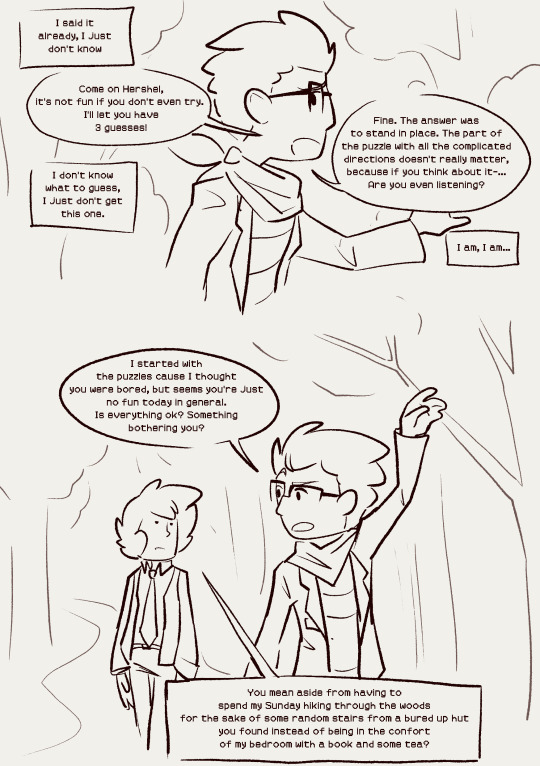
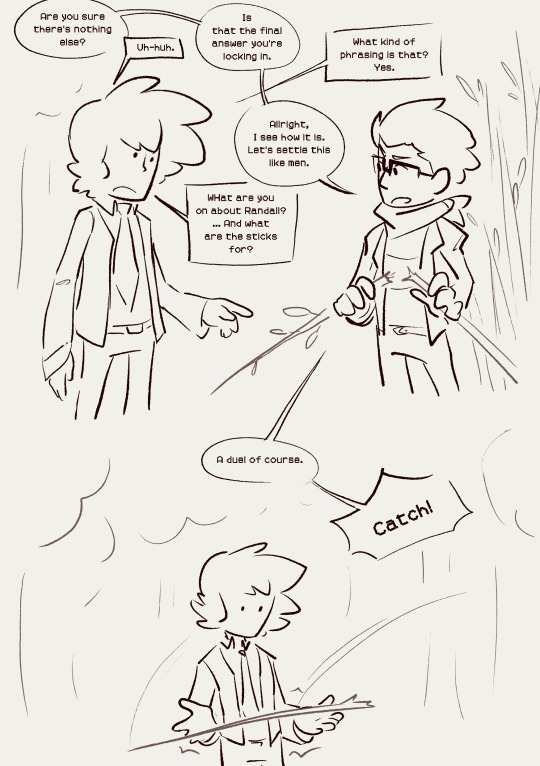
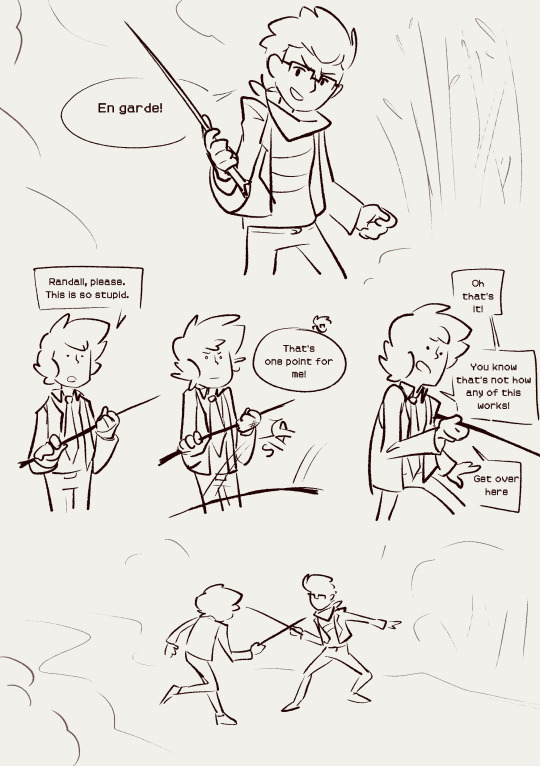
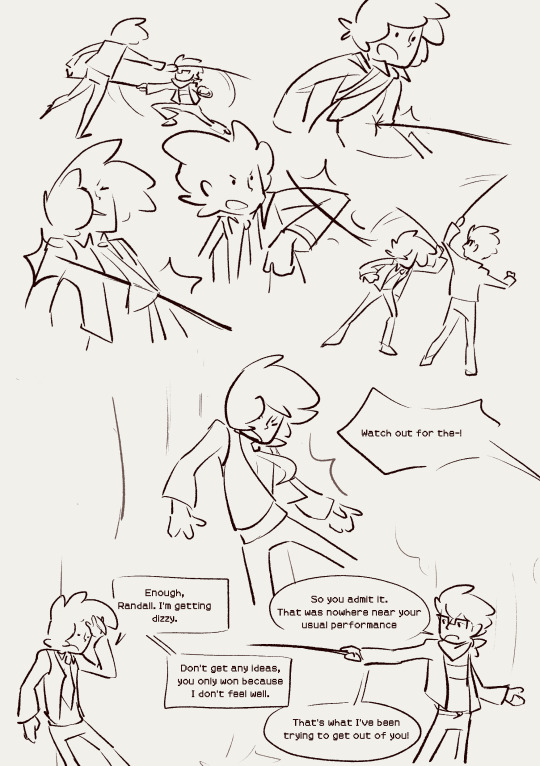
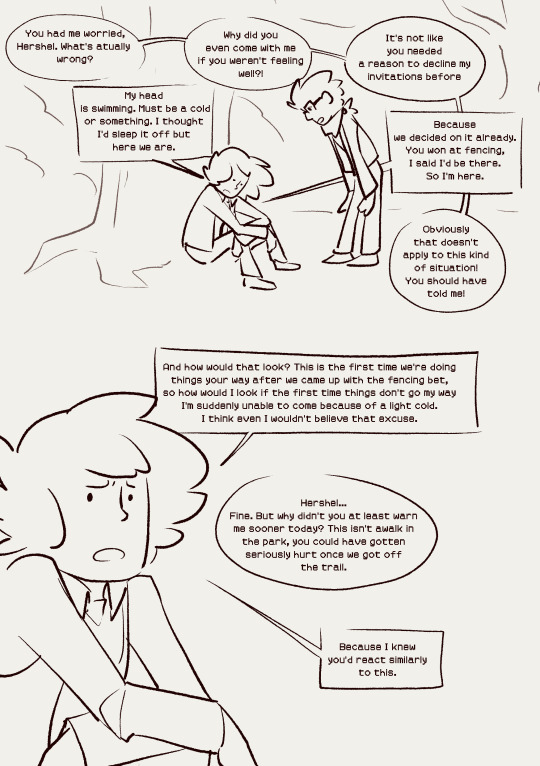
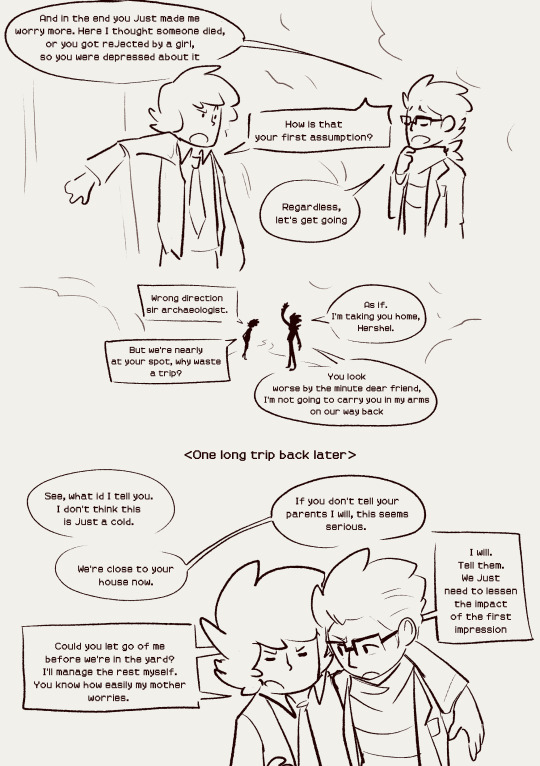
Woops, hand slipped and I turned your mystery game into a teen drama
#drawing stuff for the game im nowhere near beating again ayyy; obligatory i might not know something that messes up the whole thing; anyway#we got some cranky stundere sick hershel; we got some early stick-instead-of-sword technique developing;#we got some creative problem solving from Randall#Froshel showed up to school the next day too; randall nearly beat his ass again#I'm running off the assumption that they generally decide what to do on weekends by way of fencing and not just that one time™#I like one trope and I have the ability to draw so I draw one trope if you follow me you get hurt/comfort that's it#professor layton#hershel layton#randall ascot#professor layton miracle mask#ranlay#hurt/comfort#my art
112 notes
·
View notes
Text
Easy Narrative Techniques That Spice Up your Works
Narrative Technique is, in simple words, the method a writer or author chooses to tell their story. It includes literary and fictional devices that assist greatly in writing literature or fiction.
In this post, I'm going to go into useful details about narrative techniques and how to play them out while writing your project. Here they are:
1. Setting:
You must've noticed that in genres like horror/mystery/crime the story is set in or restricted to just one place. This has an important impact on the protagonists and characters of your story. Settings play a huge role especially in the genre of crime/horror because the plot is carried out within those premises.
For example, in the movie Scream, the whole story is carried out in the town of Woodsboro, which is significant to note as it adds more thrill given that the killer is on the loose and within very close proximity.
Settings are also vital in genres like fantasy/adventure where the conflict is carried out in an unusual environment as it creates a sense of fight-or-flight hence gripping you into the story.
2. Cliffhanger:
Cliffhangers are common, and rightfully so because they are essential in a fair amount of stories. A cliffhanger is when the author ends a chapter or a book in suspense, often hinting at event that is due in the later part of the book or series.
Cliffhangers can either introduce the possibility of a newer event, or will create a gap before something is resolved, which makes your reader want more in order to find a solution. This encourages your reader to stick by and through, until a satisfactory answer is given.
Cliffhangers are also more effective in the genres of crime, horror, mystery, adventure, and fantasy. In genres like romance or slice of life, cliffhangers can be used, but it needs to be ensured that it doesn't deviate from the light-hearted mood of the story.
3. Multiperspectivity:
This one can be so interesting if used right. Multiperspectivity, as the name suggests, is when there are more than 1 or 2 perspectives in the story.
This pumps up the interest factor as different characters will see things differently. When you show the story being carried out in a variety of POVs, you give your readers the chance to read the story in a new light with every character.
This can also affect the plot, as different characters will have different goals by the end of the story. Multiperspectivity can also help you resolve conflict between different characters. In addition, you can use this to introduce a hidden villain/a hidden hero.
4. Sensory Detail:
Sensory details are the visual images you create for your readers while writing descriptions. This helps in the famous ‘show, don't tell’ and sensory details will visualise the scene for your readers.
This can also be paralleled with imagery (sight, touch, sound, taste, smell).
For example, imagine a hilltop. Instead of just writing about the fact that you see trees and the sun and some animals, you could put down your senses to make the description more visual. It would go like – “As she stood on the hilltop, her eyes took in the verdant swathes before her. The soft breeze tickled her skin while she basked in the warmth of the sun. Deer galloped across the lush, green grass, calling and prancing in carefree freedom. The scent of the earth hit her nose, and it was there that she felt she was home."
5. Foreshadowing:
It's common, it's effective, it's fun. Foreshadowing is when the author is implicitly trying to hint at a forthcoming event. It creates a suspicion in the reader's mind, which keeps the interest alive.
Foreshadowing and cliffhangers can be mixed to create a lot of questions in your reader's minds, which further keeps them hooked into your work.
6. Analepsis & Prolepsis:
Fancy words for plain terms. It's nothing but flashbacks and flash-forwards.
Analepsis (flashback) is when the author breaks the chronology of the story to bring light to an important event in the past. This either has an impact on the plot or the main character.
Prolepsis (flash-forward) is when the author breaks the chronology to go into the future. This can be used to highlight an important event (or events) that are likely to happen in the future.
It's important to note that these are not the same as time skips, which are just a leap from one time to another to not lose grip of the eventfulness of the story.
7. Chekhov's gun:
Chekhov's gun keeps your writing in check. Chekhov's gun is a principle that says any and every element in a narrative should have a purpose. If it doesn't, it get's removed.
Let's say you've introduced a character. Chekhov's gun requires you to assign a purpose to that character. Unless they are contributing to the story, they are useless. If they can have any sort of impact, then you keep them. If they don't, then they get executed from the plot. The same thing applies to objects as well. If your protagonist has found a box, something better come out of it or it's getting thrown in the trash.
8. Title Drops:
We love these, let's be honest. As the name suggests, title drops are when the author writes the name of the title in a line, or adds it in a dialogue, or uses it as a description to finish the story with a cherry on top.
Example: In the 90s romcom She's All That, there's a scene during their prom preparations where two guys are rapping and one of them says, "she's all that" as lyrics. This is a title drop.
9. Antithesis:
Antithesis uses two opposite ideas and puts them together to amplify the message you're trying to send. Antithesis can be done in two cases: contrast and parallelism.
With respect to CONTRAST, antithesis uses two polar opposites to highlight a certain point. For example: "In an instant, all the colour was gone. He was left with black. He was left with white." Here, you have ‘black’ and ‘white’ being used as opposite colours to signify the lack of vibrance.
With respect to PARALLELISM, antithesis puts forth a contradiction but in parallel structure. This means that the grammatical structures of your opposite phrases/sentences are the same. For example: "He was left with black. He was left with white." These two sentences have the same grammatical structure. Infact, the only difference between these two sentences is the colour, but then it amplifies the message.
I hope this helps those reading this. If you're a beginner or even stuck with your work, try implementing some of these to help yourself!
- ashlee
#writers on tumblr#writerscommunity#writing#books#writer#write#writingtips#creative writing#fanfic writing#tips and tricks#fiction writing#writing ideas#writing prompts#writeblr#writer stuff#writer things#writers#writing help#writing techniques#writings#writing fiction#fiction#novel#author#fanfics#writing tips#writing tricks#women writers#ao3 writer#narrative techniques
171 notes
·
View notes
Text
Deep Water Prompt #3284
Demons are dead clever, and useful once domesticated. To make a pet of one, allow it to possess a house first. Let it calm down over a century or so, before you let it touch your soul.
#creative writing#writing prompt#haunted houses as a domestication technique#for demons#someone write this before i do#inhuman#heaven and hell#haunted houses
192 notes
·
View notes